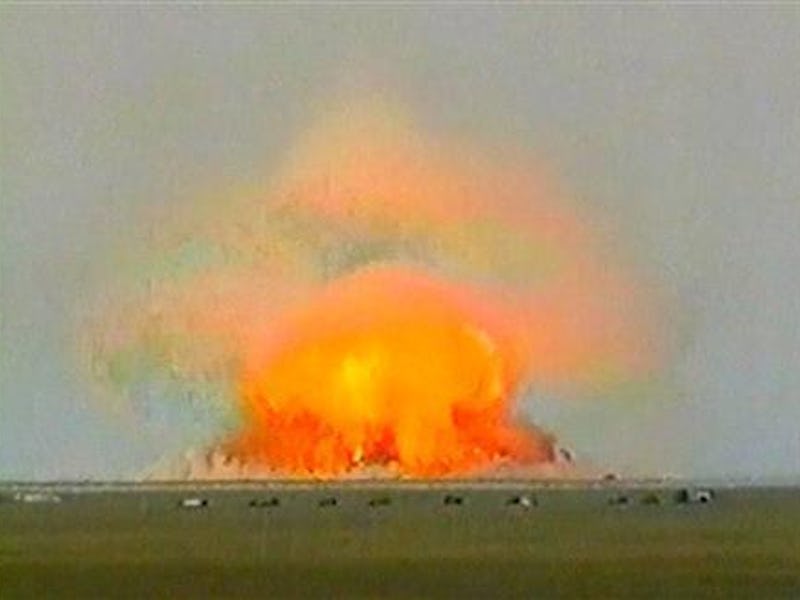Russia's Father of All Bombs Is Bigger Than America's MOAB
Can everyone please just chill?

On Thursday morning, the U.S. military dropped the Mother of All Bombs, technically called the GBU-43/B Massive Ordnance Air Blast on a network of ISIS-controlled caves in Afghanistan, impacting at around 7:32 p.m. local time, or 11:32 a.m. Eastern. The MOAB is the largest non-nuclear weapon the U.S. owns, and before today it had never been used in combat. But despite how big the Mother is, the Russian Federation still owns the Father of All Bombs.
The MOAB has been politically fraught from the very beginning. When it was first announced and tested, it provoked an extremely competitive response from Russia, which then went about building and ostentatiously testing the Father of All Bombs (FOAB).
The specifics of the mythical Father of All Bombs have never been confirmed beyond Russian military claims, but it is purported to have a blast equivalent to a whopping 44 tons of TNT. Like all other “thermobaric” bombs, it uses the atmosphere to power its fuel reaction, rather than incorporating an oxidizer into the fuel mixture in the weapon itself. This means that as the explosion progresses, it burns through the air to power its own chemical reaction, creating a super-heated blast wave that kills targets with a wall of compressed gases.
Russia typically describes the FOAB as a nuke without the fallout, even though any kind of fission weapon is exponentially more powerful than the FOAB.
The FOAB’s very size also made it less useful, however, as it would almost certainly have been a challenge to get it working on any sort of long-range, self-guided missile. Thus far, the enormous, bucket-shaped bomb has only been seen in a droppable form.
Not that the MOAB wasn’t large enough on its own. The Mother of All Bombs is a monster — 18,500 pounds of explosives into an 11-ton bomb. It’s roughly 22 times as powerful as a 1,000-pound Tomahawk cruise missile, and more than a third as powerful as the entire 59-missile strike on Syria that occurred last week. It’s hard to imagine a Taliban or ISIS encampment large enough to require a singular explosion of this size, but Trump and his advisors have certainly found a vivid way of making it clear that the U.S. will be increasing the intensity of any military action it does decide to undertake.
Like the MOAB, until Thursday, the FOAB has never been used in combat. So as far as the media knows, Russia may or may not still keep some of the bombs in its possession — but if it does, there’s every possibility it could respond to Trump’s Mother-load with a Father-version of its very own. As Russian officials said at the time of the original FOAB test in 2007, “The defense ministry stresses this military invention does not contradict a single international treaty. Russia is not unleashing a new arms race.”
And that’s the thing. The very non-nuclear nature of the MOAB and FOAB are what make it possible to use them at all — and thus, their lack of fallout could actually make them infinitely more destructive than their nuclear forebears.